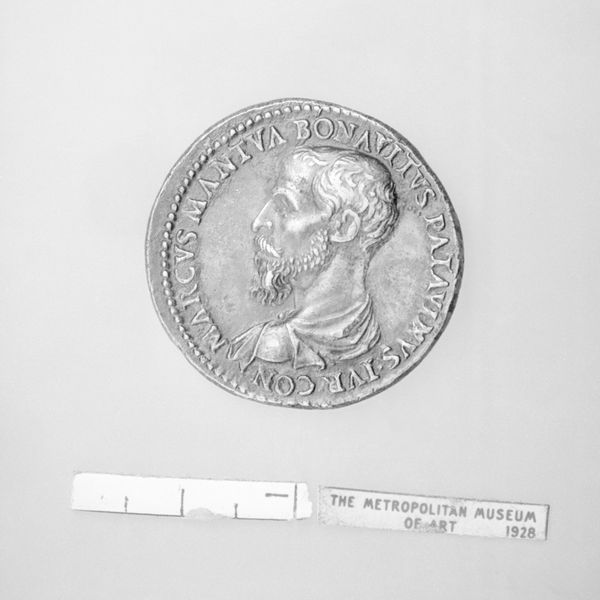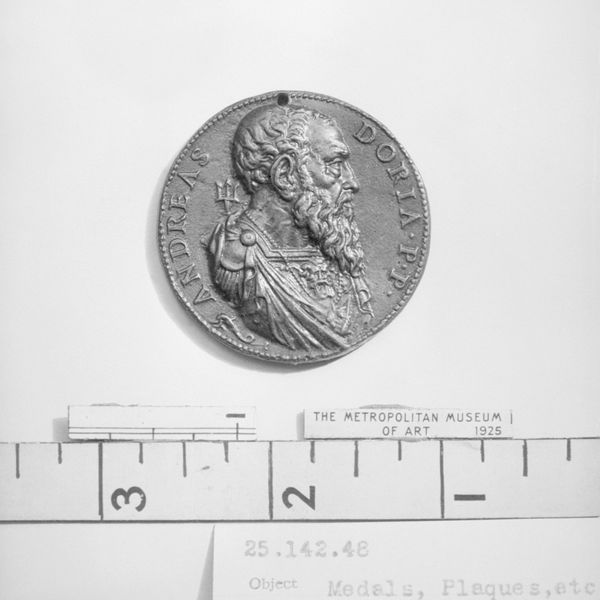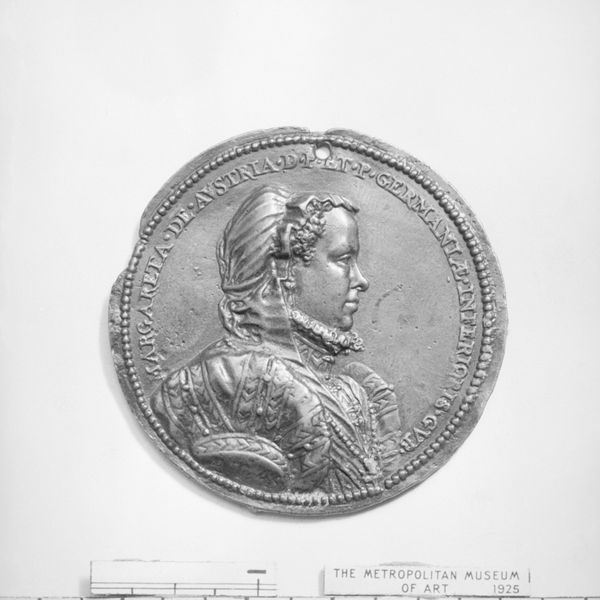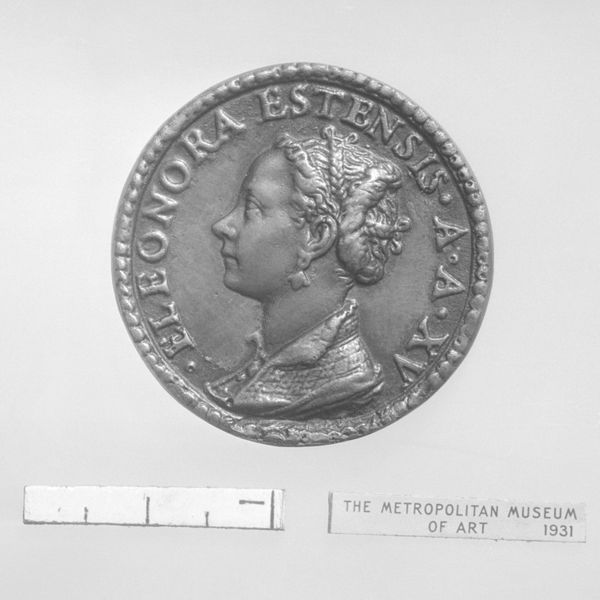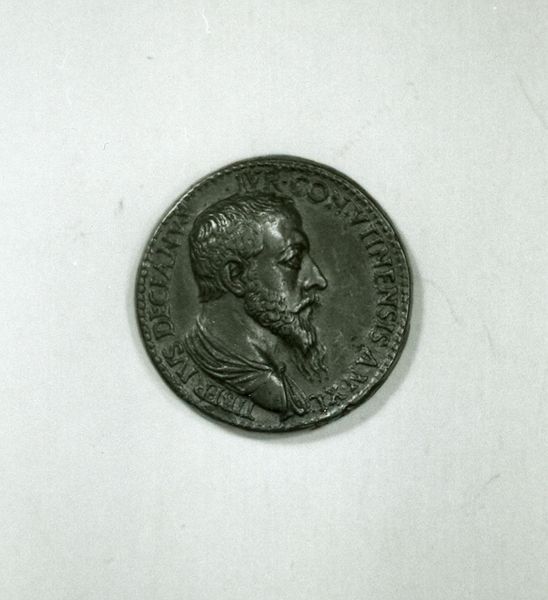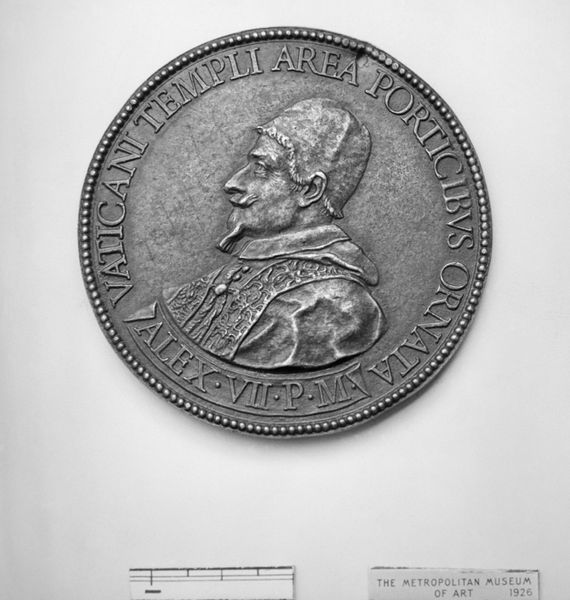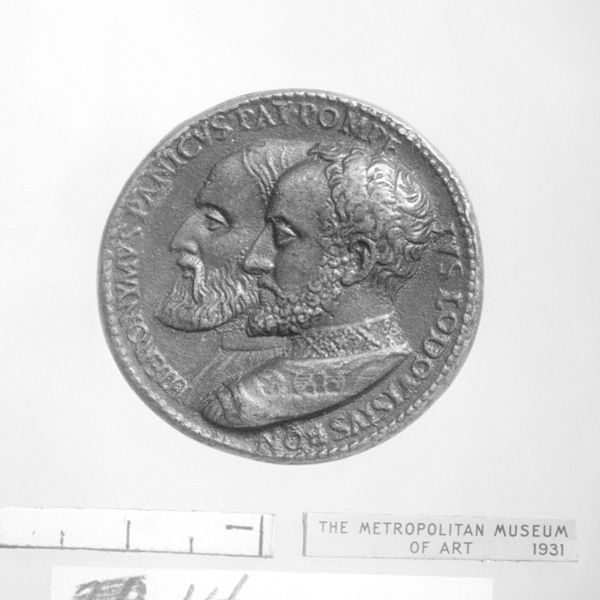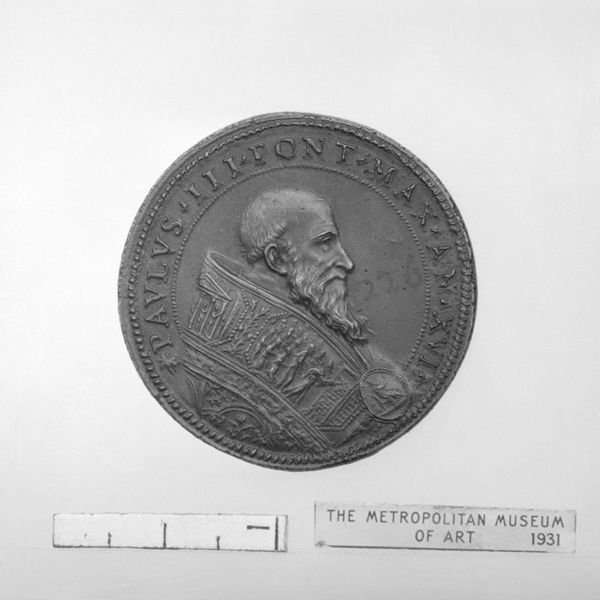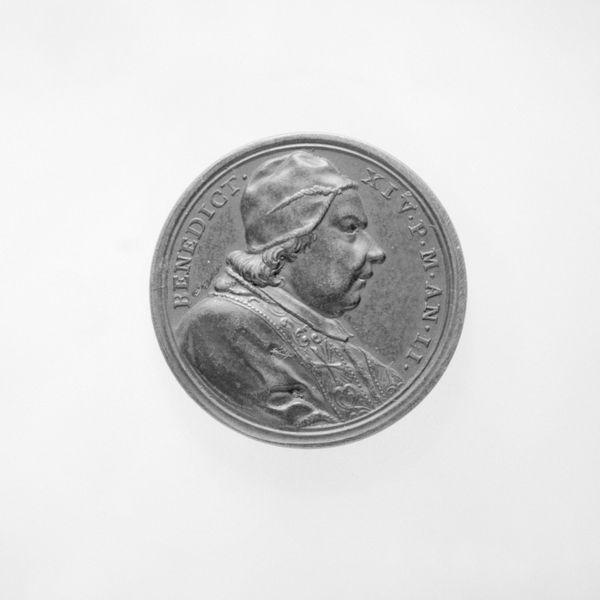
Antoine Perrenot, Cardinal de Granvelle (1516–1586, Cardinal 1561) 1565 - 1590
0:00
0:00
carving, relief, sculpture
#
portrait
#
medal
#
medieval
#
carving
#
relief
#
11_renaissance
#
sculpture
#
carved
#
decorative-art
Dimensions: Diameter: 1 3/4 in. (44 mm)
Copyright: Public Domain
Editor: This is a relief carving of Antoine Perrenot, Cardinal de Granvelle, dating from sometime between 1565 and 1590. It seems to have been made to commemorate him as a kind of medal. I find his stern expression rather imposing. What do you see in this piece? Curator: Beyond the skillful carving, this medal offers a lens into the complex intersection of religious authority and political power during the Renaissance. Granvelle was a key figure in the Habsburg Netherlands. Understanding the brutal suppression of early Protestant movements by the Spanish crown gives us insight into this portrait and how it functions as a symbol of control. How does knowing that change your perception of that "stern expression?" Editor: It certainly adds a layer of meaning. Knowing his role in that historical context, the portrait now feels more like a calculated statement of power rather than a simple likeness. Did medals like this have a wider circulation or audience beyond court circles? Curator: Absolutely. Medals like these were often gifts or diplomatic tools. They promoted the subject's image, solidifying alliances, spreading propaganda, and shaping public perception. Considering Granvelle's active role in the Counter-Reformation, this image likely aimed to project strength and piety at a time of great religious upheaval. Do you see this playing on any existing societal biases about religious leaders? Editor: I hadn't thought of that, but now I'm considering how the depiction of Granvelle in profile and with these very specific clothes reinforced accepted conventions and further established his authority within that context. It's quite a powerful image, knowing all this. Curator: Precisely. Examining the context of Granvelle's role forces us to think critically about the visual strategies employed to maintain social hierarchies during that period. We gain insights not only into the art of the Renaissance but also the way in which power presents and perpetuates itself. Editor: That's so insightful; I’ll never look at portraits the same way again!
Comments
No comments
Be the first to comment and join the conversation on the ultimate creative platform.

